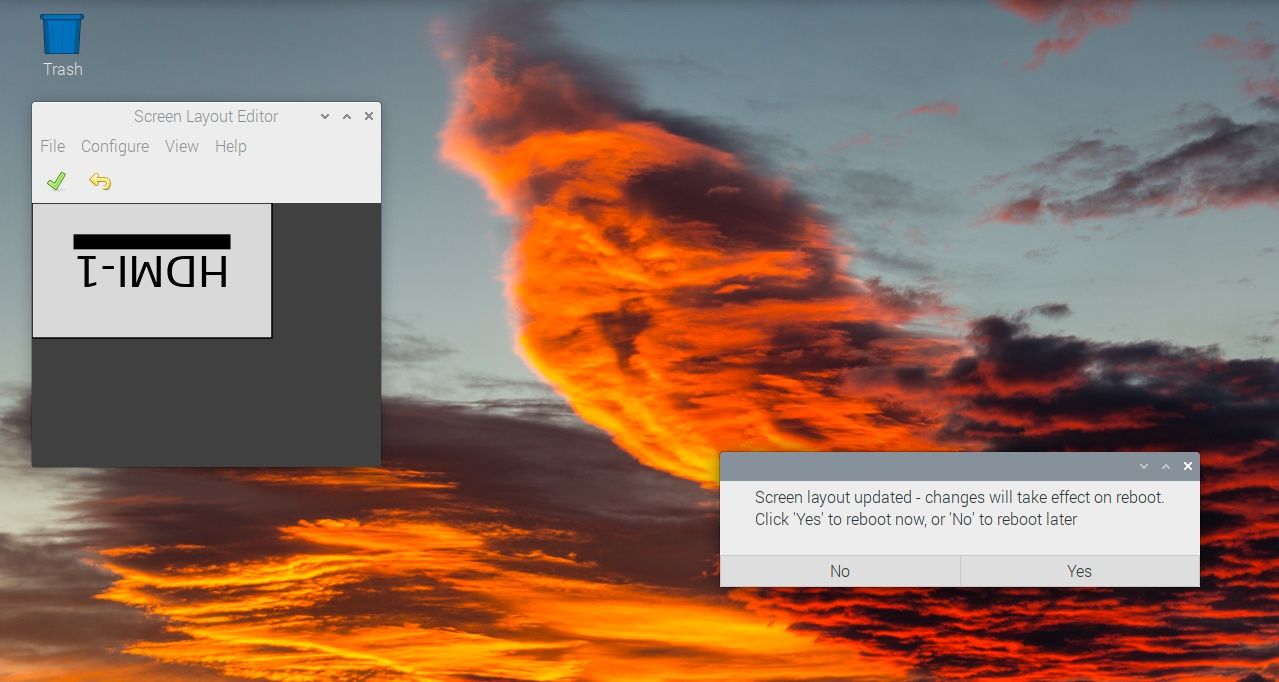
Overview
Introduction
3.5-inch Capacitive Touch LCD Display, 480 × 320, Adjustable Brightness. Support popular mini PC such as Raspberry Pi, Banana Pi and Jetson Nano, and also can be used as a general-purpose HDMI display, connecting computers, TV boxes, and so on.
Feature
- 3.5-inch screen, 480 × 320 hardware resolution(ILI9488), configurable software resolution up to 1920×1080, above 60~75fps.
- Supports up to 5-point capacitive touch.
- Supports Raspberry Pi OS / Ubuntu and Kali when used with Raspberry Pi.
- Supports Ubuntu when used with Jetson Nano.
- Supports Windows 11 / 10 / 8.1 / 8 / 7 when used as a computer monitor .
- Supports power control & backlight control, more power saving.
- Support rotate screen by button
- Support DDC/CI
Parameters
| Item |
Description |
Unit |
| Model |
3.5inch 480 × 320 LCD |
/ |
| Touch Panel |
CTP |
/ |
| Size |
3.5 |
Inch |
| Viewing Angle |
130 |
Deg |
| Resolution |
480 × 320 |
Pixels |
| Outline Dimensions |
93.44 × 60.00 |
mm |
| Display Area |
73.44 × 48.96 |
mm |
| PCB Size |
85 × 56 |
um |
| Pixel Pitch |
153 × 51 |
um |
| Color Gamut |
80% |
NTSC |
| Maxium Brightness |
300 |
cd/m² |
| Contrast |
500:1 |
/ |
| Backlight Adjustment |
Button Dimming |
/ |
| Refresh Rate |
60 |
Hz |
| Display Port |
Standard Micro HDMI Port |
/ |
| Touch Port |
5V USB Touch(Type-C) |
/ |
| Power Consumption |
Normal mode: 5V, 200~230mA (max brightness)
Standby mode: 5V, 70~90mA (no signal, standby)
Suspend mode: 5V, 20mA (power switch off) |
/ |
| Operating Temp |
-20~ +70 |
°C |
| Storage Temp |
-30~ +80 |
°C |
| Mounting thread size |
M2.5 |
/ |
| Package Size |
?*? |
mm |
| Weight |
55 |
g |
Brief Introduction
 Micro HDMI interface: HDMI signal input interface
Micro HDMI interface: HDMI signal input interface- The brightness button adjusts the lcd brightnees by 10% step in 10~100% range.The brightness value is stored to the non-volatile memory, and updated in every button click or DDC/CI brightness command.
- The power switch is toggle push button, toggles power on (normal mode) and power off (suspend mode) status. The power indicator led lights on when the display is suspended. DDC/CI function is always ready even it is in suspend mode, and the display can wakeup programmatically by DDC/CI commands.
- The display supports 0, 180º rotation of the lcd view area, without changing settings at the RaspberryPi or PC. Its useful for simple customization of the display usage, but after rotation the touch needs to be re-calibrated.Press brightness button, holding, then press power button, rotates the display 180 º, the rotation status is also saved to non-volatile memory
- DDC/CIThe display’s brightness, contrast, colors can be updated by DDC/CI commands from HDMI port DDC channel (I2C port).It also can enable or disable splash logo, hdmi symbol on the screen, standby feature. If the standby feature is disabled (disabled by default), the display always shows message if there is no input signal.
- Type C power & touch port: Use it for communication and provide power for ordinary display.
User Manual
Working With Raspberry Pi
Hardware Connection
1. Connect the Touch port to the USB port of the Raspberry Pi.
2. Connect the HDMI port to the Raspberry Pi HDMI port.

Software Setting
Support Raspberry Pi OS / Ubuntu / Kali and Retropie systems. When the LCD works on systems such as Raspberry Pi, the resolution must be manually set. Otherwise, the display resolution will be incorrect and affect your experience.
Step 1): Download the Raspberry Pi Imager from Raspberry Pi official website: https://www.raspberrypi.com/software/

Step 2): Prepare a newly formatted micro SD memory card(TF card) with USB micro SD card reader, recommend sizes are 16G, 32G. If you don’t know how to format micro SD card, please run Raspberry Pi Imager and select “Erase” in Operating System field, and “your micro SD card” in Storage field, then click “WRITE” to format micro SD card



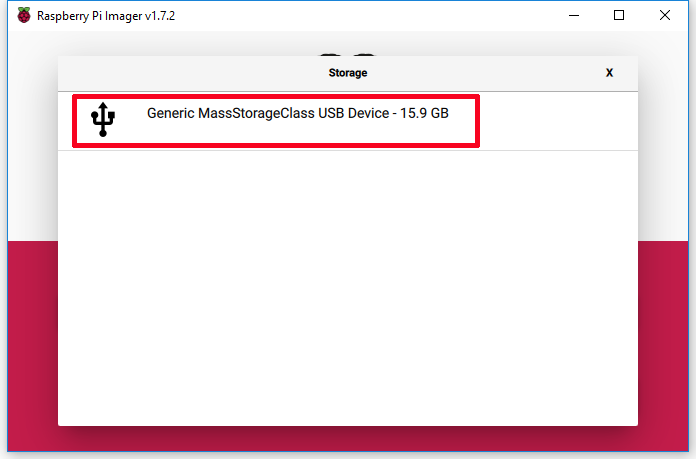
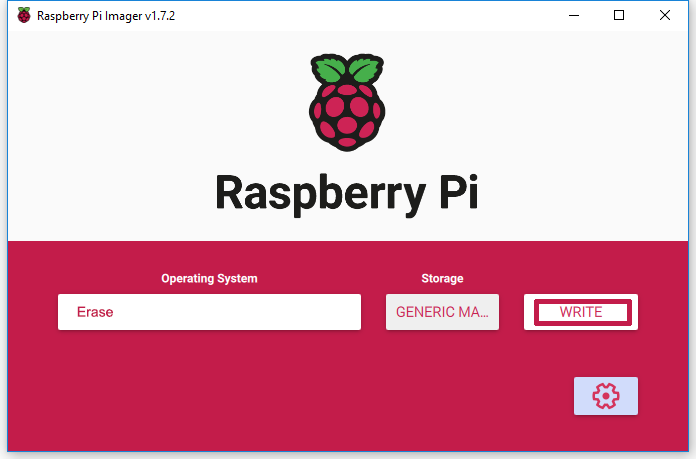
Step 3): Run Raspberry Pi Imager, then select “Use custom” in Operating System field then browse “Raspberry Pi OS” you have downloaded, then select “your SD card” in Storage field. (If you have burnt Raspberry Pi OS in your SD card, please skip step 3 to step 5)

Step 4): Click “setting icon” to enable SSH, set username and password (here we use pi as username and raspberry as password), and configure wireless LAN. Then click “SAVE”
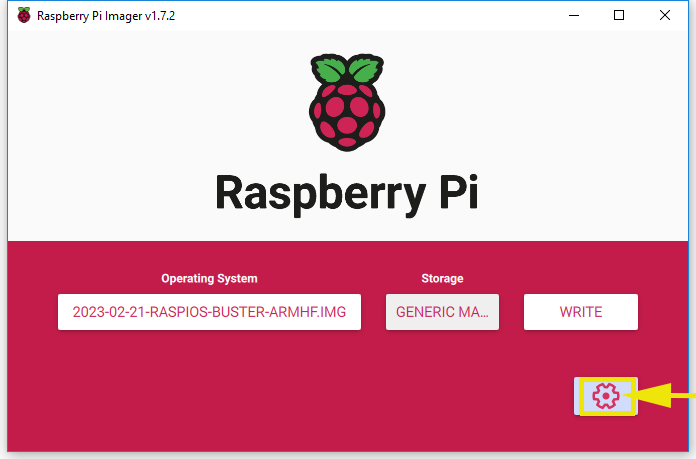



Step 5): Click WRITE to burn OS system (Raspberry Pi OS) in your micro SD card
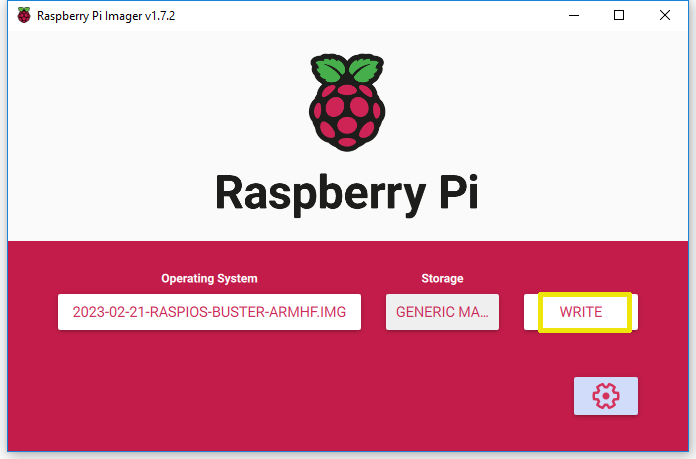
Step 6): Connecting HDMI display to your Raspberry Pi.
Step 7): Insert the TF card into the Raspberry Pi, power on the Raspberry Pi, and wait for a few seconds to display normally.

Now you have completed to install the touch driver for 3.5″ HDMI touch screen.
How to Rotate the Display in Raspberry Pi OS
Your easiest option for rotating the display on a Raspberry Pi is via the operating system. In Raspberry Pi OS there is a specific menu command in the desktop environment. Make the right selection here, and you can rotate the display clockwise, anti-clockwise, or flip it entirely.
To use this:
- Open Menu > Preferences
- Select Screen Configuration
- In the new window, right-click the display
- Select Orientation and choose one of the four options
- Click the green check to confirm and apply the new orientation
When applying the change, you’ll be asked to reboot. The screen will have a new orientation when the Pi reboots.
Rotate Your Raspberry Pi Display in Ubuntu
Ubuntu is an increasingly popular option for Raspberry Pi users as an alternative to Raspberry Pi OS. Steps for rotating the display in Ubuntu differ slightly.
- Click Settings
- Choose Displays
- Click the dropdown menu next to Orientation to the appropriate option
You have four options:
- Landscape
- Portrait Right
- Portrait Left
- Landscape (flipped)
Touch calibration
After display rotation, the touch position is wrong because the touch does not change with the display angle. So you need to modify the touch.
1. Install libinput.
sudo apt-get install xserver-xorg-input-libinput
If you are installing an Ubuntu system or a Jetson Nano. The installation command is:
sudo apt install xserver-xorg-input-synaptics
Use mouse to control your screen, then click [Preferences]-[Calibrate Touchscreen] from main menu, (or enter DISPLAY=:0.0 xinput_calibrator in the terminal), click four crossbar points on corners, complete the calibration.

Change the resolutiom
Click the Raspberry Pi icon -> Preferences -> Screen Configuration, in the new window, click layout -> screen -> HDMI -> resolution -> 680×480, then click Apply, and click OK in the new pop. We recommend setting the resolution to 640×480.
Note: Raspberry Pi OS Bookworm branch system, since dtoverlay=vc4-kms-v3d is loaded by default, it is invalid to modify the resolution in /boot/config.txt.

Working With PC
Support Windows 11 / 10 / 8.1 / 8 / 7
Steps:
1. Connect the Touch port of the LCD to the USB interface of the PC, and Windows will automatically identify the touch function.
2. Connect the HDMI port of the LCD to the HDMI port of the PC, and Windows will automatically identify the display function.

Note:
- Some PCs do not support plug-and-play HDMI devices, and they can be used normally after restarting the system.
- If the power supply of the USB interface is insufficient, the LCD will flicker. It is recommended to use the host USB3.0 interface.
Windows Touch Calibration
Take Windows 10 as an example:
- 1. Enter the Windows settings of the system, type in the search bar and click “Calibrate the screen for pen or touch input” (as shown in the picture below):

- 2. Click “Setup” in the pop-up “Tablet PC Settings” interface:
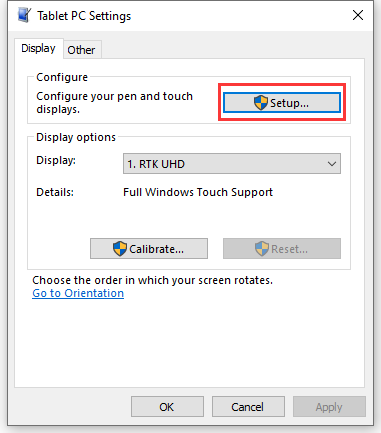
- 3. The following text prompt will appear on the screen. Please tap the touch screen with your finger, and the computer will recognize it as a touch screen.
【Note】If the touch screen is blank, press the “Enter” key, and the text prompt will switch to the touch screen. (The screen which displays the text prompt will be used as a touch screen!)

Dimensions
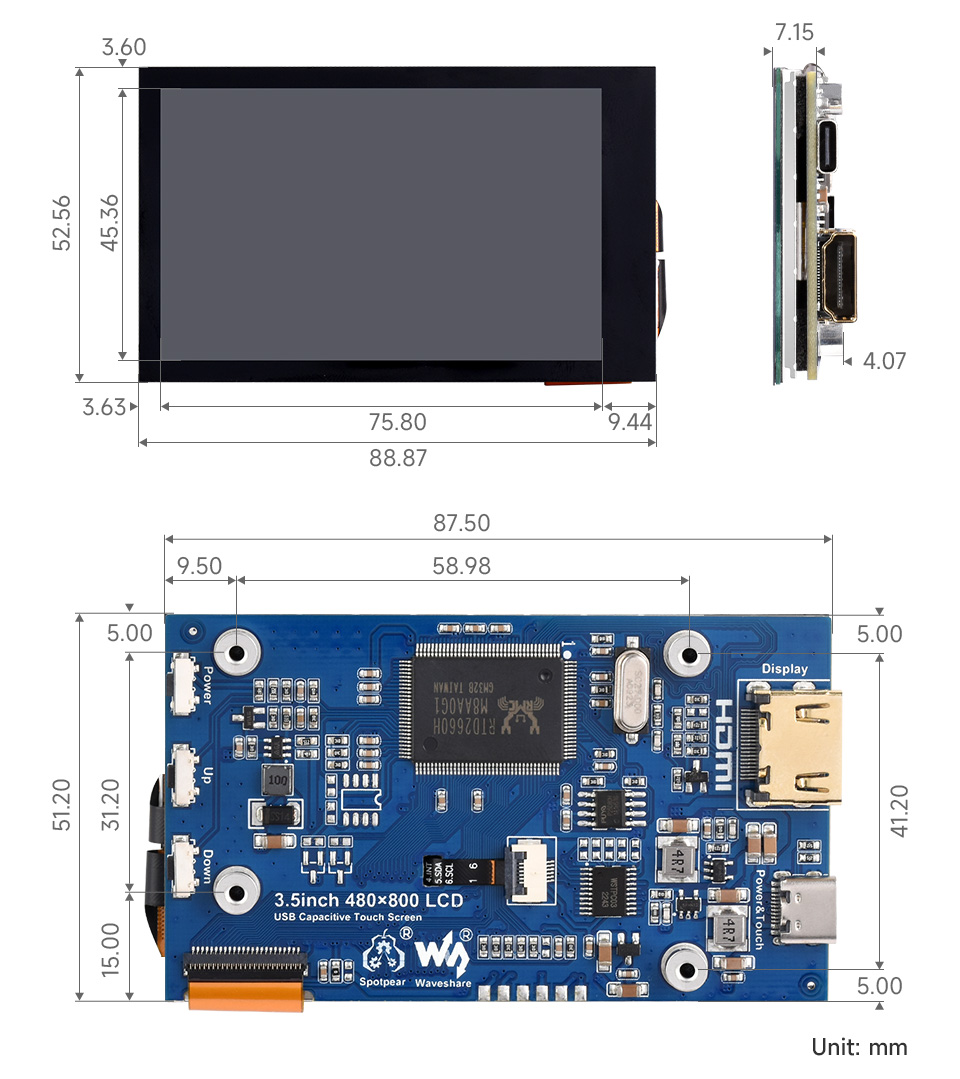












 Micro HDMI interface: HDMI signal input interface
Micro HDMI interface: HDMI signal input interface













